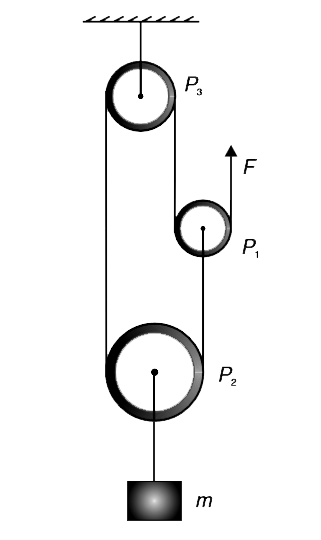Text Solution
Verified by Experts
The correct Answer is:
|
Topper's Solved these Questions
MOMENTUM AND CENTRE OF MASS
ARIHANT|Exercise Momentum And Center of Mass|117 VideosView PlaylistROTATIONAL MOTION
ARIHANT|Exercise PHYSICS|159 VideosView Playlist
Similar Questions
Explore conceptually related problems
Knowledge Check
A
B
C
D
Submit
A
B
C
D
Submit
A
B
C
D
Submit
Similar Questions
Explore conceptually related problems
ARIHANT-NEWTONS LAWS OF MOTION-All Questions
- An ideal spring is in its natural length (L) with two objects A and B ...
03:17
|
Play - The fig. shows an infinite tower of identical springs each having forc...
03:08
|
Play - In the system shown in the fig. there is no friction and string is lig...
01:30
|
Playing Now - In the system shown in the fig., the bead of mass m can slide on the s...
04:40
|
Play - In the arrangement shown in the fig. all pulleys are mass less and the...
04:35
|
Play - In the fig. shown, the pulley and string are mass less and the incline...
04:54
|
Play - A triangular wedge A is held fixed and a block B is released on its in...
05:47
|
Play - A block A is made to move up an inclined plane of inclinationtheta wit...
02:03
|
Play - A 50 kg man is standing at the centre of a 30 kg platform A. Length of...
05:10
|
Play - A wedge is placed on the smooth surface of a fixed incline having incl...
09:22
|
Play - In the system shown in figure, all surfaces are smooth, pulley and str...
03:15
|
Play - A block is placed on an incline having inclination theta . There is a ...
08:09
|
Play - A wedge of mass m is placed on a horizontal smooth table. A block of m...
11:22
|
Play - A rod is kept inclined at an angle theta with the horizontal A sleeve ...
07:43
|
Play - In the arrangement shown in figure, a block A of mass m has been place...
10:06
|
Play - A smooth rod is fixed at an angle alpha to the horizontal. A small rin...
05:38
|
Play - In the system shown in figure all surfaces are smooth and string and p...
06:40
|
Play - In the system shown in figure, the two springs S(1) "and" S(2) have fo...
03:24
|
Play - A block of mass m = 1 kg is kept pressed against a spring on a rough h...
03:23
|
Play - An experimenter is inside a uniformly accelerated train. Train is movi...
06:12
|
Play
